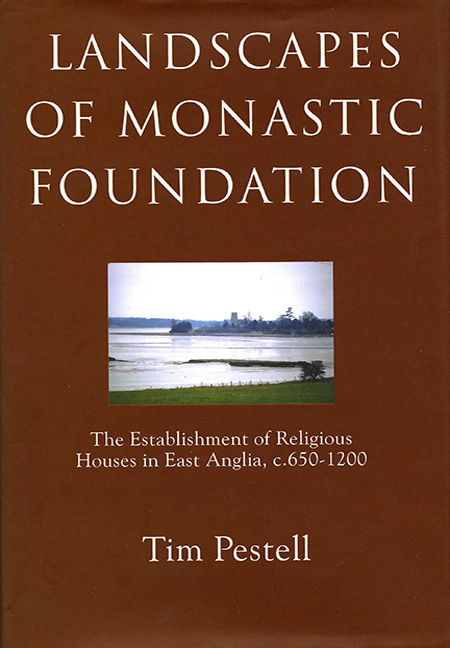Book contents
- Frontmatter
- Contents
- List of illustrations
- Acknowledgements
- Abbreviations
- 1 Introduction: Past and Present Approaches to Monastic Studies
- 2 Monasticism in Middle Anglo-Saxon East Anglia
- 3 The First Viking Age and its Consequences for Monasticism in East Anglia
- 4 Monastic Reform and Religious Life in the Later Anglo-Saxon Period
- 5 The Establishment of Monasteries in the Norman Landscape
- 6 Conclusions
- Bibliography
- Index
- Frontmatter
- Contents
- List of illustrations
- Acknowledgements
- Abbreviations
- 1 Introduction: Past and Present Approaches to Monastic Studies
- 2 Monasticism in Middle Anglo-Saxon East Anglia
- 3 The First Viking Age and its Consequences for Monasticism in East Anglia
- 4 Monastic Reform and Religious Life in the Later Anglo-Saxon Period
- 5 The Establishment of Monasteries in the Norman Landscape
- 6 Conclusions
- Bibliography
- Index
Summary
At the start of this book, it was argued that monastic studies have been heavily influenced by outdated or antiquarian inquiry, better described as research interests than research agenda. While the rise of the New Archaeology in the 1960s did much to promote the integration of scientific approaches with archaeological field methods, monastic studies have been less innovative, typically focussing upon the archaeological investigation of building ground-plans and architectural form. Monastic studies have also tended to be distorted by a preferential level of interest being shown in the Cistercians, in comparison to other religious orders. While the white monks were undoubtedly a powerful force in medieval religious life, they need not have been representative of ‘monasticism’ in general and what it meant to various contemporary audiences. This is particularly true in East Anglia, which had only one Cistercian foundation until the mid-thirteenth century. Perhaps most significantly, monastic research has tended to be divided into ‘pre-’ or ‘post-’ Norman Conquest periods of study, a phenomenon that appears to relate to the continued primacy of a taxonomic approach, identifying and comparing the remains of medieval buildings or researching particular monastic orders. This situation has only been exacerbated by the decline in research excavations and the rise of rescue-driven archaeological work in recent years. Often, overlying research strategies have not been formulated, investigation tending to occur where damage is threatened, rather than where information is needed.
Against this backdrop of practical difficulties, the area of research that has advanced most in recent years concerns the investigation of wider monastic precincts and estates. This has stressed the industrial activity undertaken at many religious sites and has shed light on the wider economic place held by these institutions (generally male monasteries), as self-sufficient corporations in medieval society. There has, however, been relatively little investigation of the ways in which monasteries may have come to be used or imbued with proactive levels of meaning to wider society: For Glyn Coppack, ‘in our attempts to understand their functions … archaeology can provide the how but it cannot provide the why’. In fact, post-processual schools of archaeological thought have done much to negate such views and offer up new readings of material culture.
- Type
- Chapter
- Information
- Landscapes of Monastic FoundationThe Establishment of Religious Houses in East Anglia, c.650–1200, pp. 218 - 232Publisher: Boydell & BrewerPrint publication year: 2004



